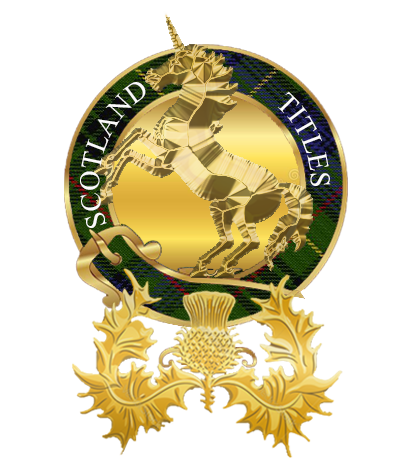THE PERFECT MOTHERS DAY GIFT - RECEIVE 20% OFF + FREE AWARD OF EMBLEM BY USING CODE "MOTHER24"
Scottish Tartan
Scottish kilts, known as ‘The National Dress of Scotland’, have deep cultural and historical roots and are a sacred symbol of patriotism and honour for a true Scotsman.
Many historians have assumed that the idea of plaids (tartans) was relatively new to Scotland in the seventeenth century. Archaeology tells a different story. The Celts have been weaving plaid twills (tartans) for three thousand years at least.
Kilts are made of tartan, worn around the waist and accompanied by a sporran, which is a small bag worn over the kilt, a kilt pin which holds the two pieces of tartan together at the front, and a sgian dubh, a small dagger which sits in the sock.
Originating back to the 16th century, the kilt first appeared as a thick, woollen full-length garment whose upper half could be worn over the head as a hood, or as a cloak draped over the shoulder. It wasn’t until the late 17th or early 18th century that the knee-length kilt was developed and was worn throughout the Highlands and northern Lowlands.
Its design allowed those who wore it to move much more freely, essential in the Highlands of Scotland where the weather can become very damp. The tight weave of the wool created a strong barrier between the rain and skin, and could easily be removed and used as a blanket during cold nights. Its popularity soon increased once the Highland regiments of the British Army adopted the design, and over the centuries has developed to include pleats and brightly coloured tartan patterns, unique to the clan to which the wearer belongs.
During the 19th century, Scottish kilts often used family tartan and were worn as a form of ceremonial dress at occasions such as weddings, sporting events and the Highland Games. Nowadays, the kilt is recognised the world over and is worn by many for both formal and informal occasions.
Tartan is a patterned cloth consisting of criss-crossed horizontal and vertical bands in multiple colours. Tartans originated in woven wool, but now they are made in many other materials. Tartan is particularly associated with Scotland; Scottish kilts almost always have tartan patterns.
Tartan is made with alternating bands of coloured (pre-dyed) threads woven as both warp and weft at right angles to each other. The weft is woven in a simple twill, two over—two under the warp, advancing one thread at each pass. This forms visible diagonal lines where different colours cross, which give the appearance of new colours blended from the original ones. The resulting blocks of colour repeat vertically and horizontally in a distinctive pattern of squares and lines known as a sett.
Tartan is often mistakenly called "plaid" (particularly in the United States), but in Scotland, a plaid is a large piece of tartan cloth, worn as a type of kilt or large shawl. The term plaid is also used in Scotland for an ordinary blanket such as one would have on a bed.
The Dress Act of 1746 attempted to bring the warrior clans under government control by banning the tartan and other aspects of Gaelic culture. When the law was repealed in 1782, it was no longer ordinary Highland dress, but was adopted instead as the symbolic national dress of Scotland.
Until the middle of the nineteenth century, the highland tartans were only associated with either regions or districts, rather than any specific Scottish clan. This was because like other materials, tartan designs were produced by local weavers for local tastes and would usually only use the natural dyes available in that area, as synthetic dye production was non-existent and transportation of other dye materials across long distances was prohibitively expensive.
The patterns were simply different regional checked-cloth patterns, chosen by the wearer's preference—in the same way as people nowadays choose what colours and patterns they like in their clothing, without particular reference to propriety. It was not until the mid-nineteenth century that many patterns were created and artificially associated with Scottish clans, families, or institutions who were (or wished to be seen as) associated in some way with a Scottish heritage. The Victorians' penchant for ordered taxonomy and the new chemical dyes then available meant that the idea of specific patterns of bright colours, or "dress" tartans, could be created and applied to a faux-nostalgic view of Scottish history.
Tartans are sometimes differentiated from another with the same name by the label dress, hunting, or rarely mourning.
Dress tartans are based on the earasaid tartans worn by Highland women in the 17th and 18th centuries. Dress tartans tend to be made by replacing a prominent colour with the colour white. They are commonly used today in Highland dancing.
Hunting tartans also seem to be a Victorian conception, although there is some evidence of early tartans with camouflage colours. These tartans tend to be made up of subdued colours, such as dark blues and greens. Despite the name, hunting tartans have very little to do with actual hunting.
Mourning tartans, though quite rare, are associated with death and funerals. They are usually designed using combinations of black and white, or by replacing bright colors such as reds and yellows in a traditional tartan with black, white, or grey.
